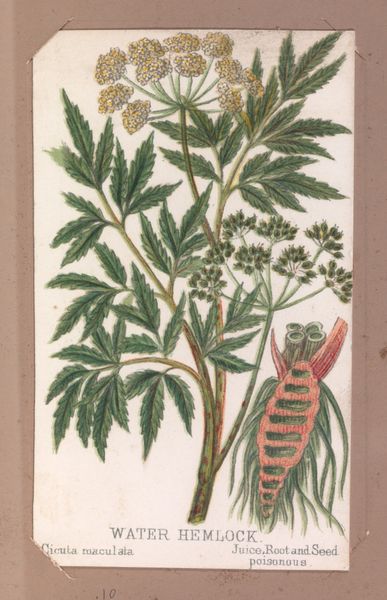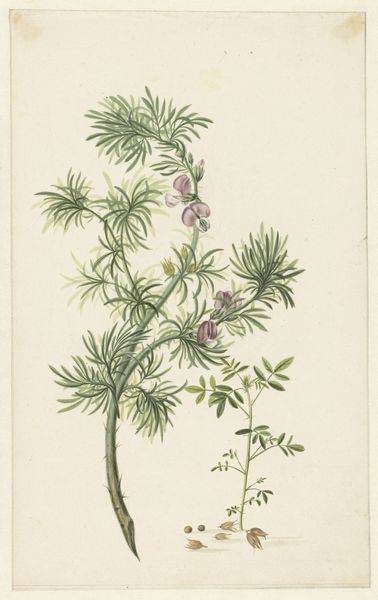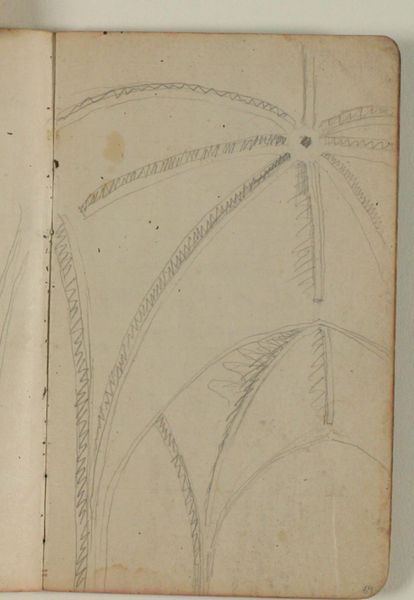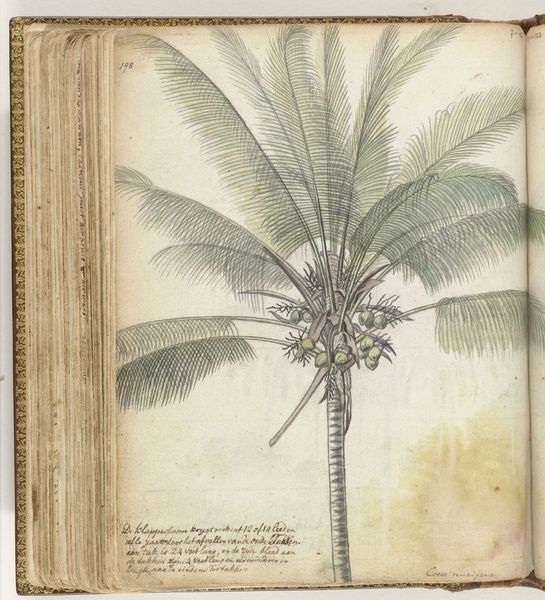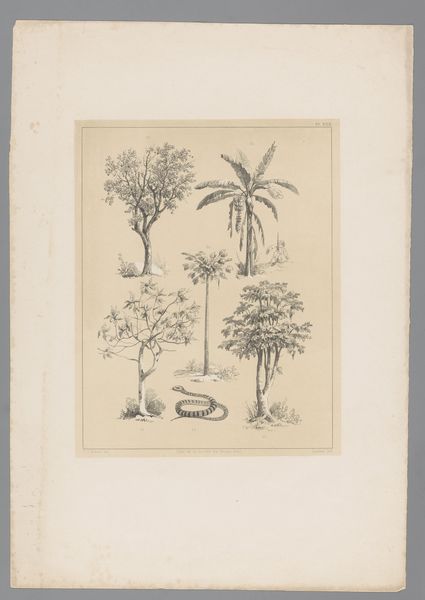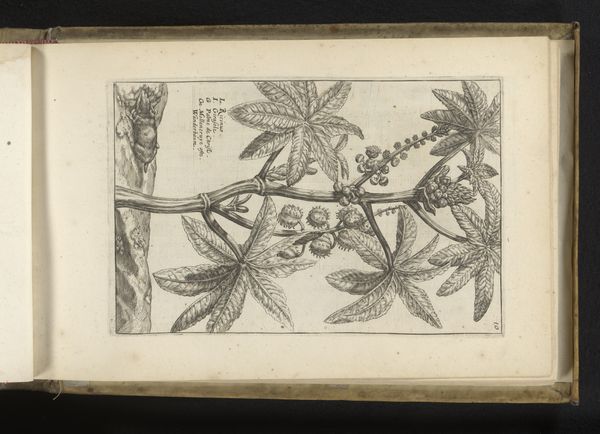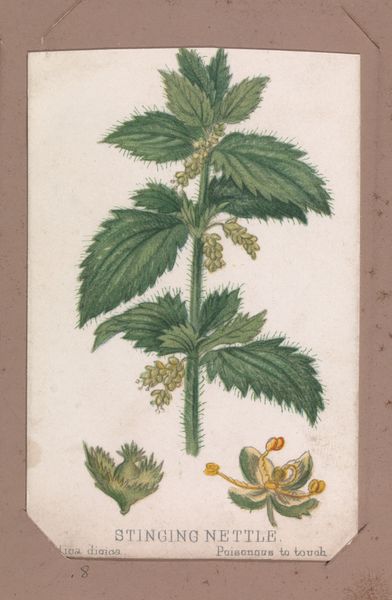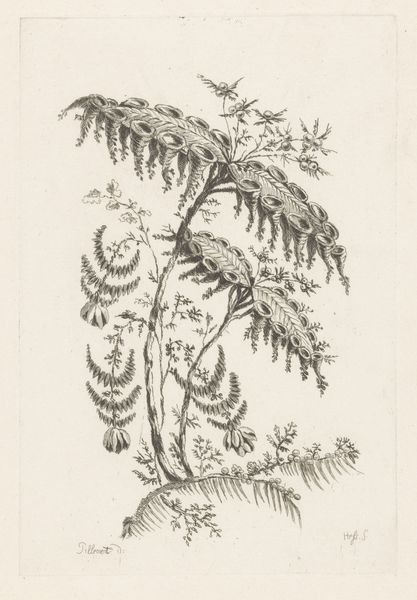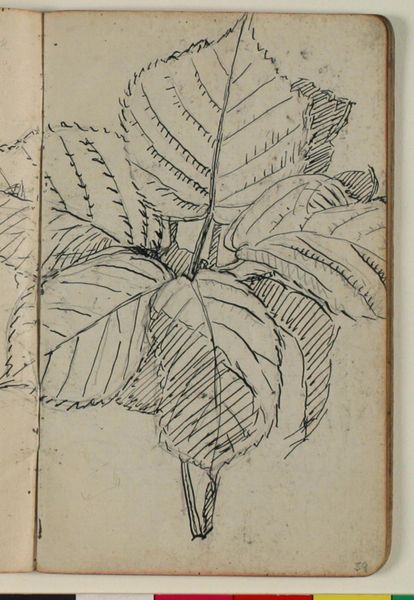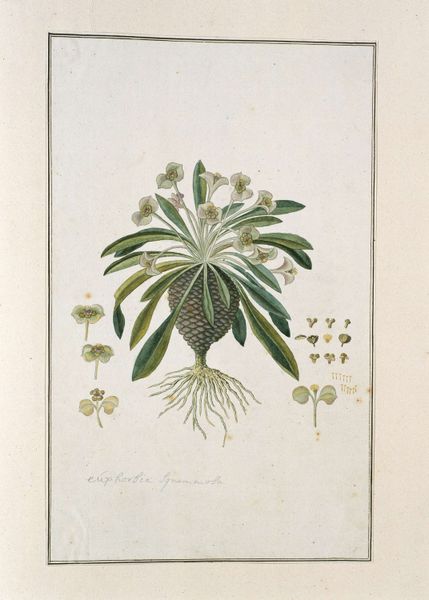
drawing, plein-air, paper, watercolor
#
drawing
#
water colours
#
plein-air
#
landscape
#
paper
#
watercolor
#
coloured pencil
Dimensions: height 195 mm, width 155 mm
Copyright: Rijks Museum: Open Domain
Curator: Look at this evocative drawing, titled "Tropical Trees," created by Jan Brandes, possibly between 1779 and 1787. What are your immediate thoughts? Editor: It’s serene. The light watercolor washes give it an airy quality, like observing the tropics through a hazy, humid atmosphere. The arrangement of the various trees almost reads as an exercise in geometric forms, but softer. Curator: Brandes was an interesting figure; a minister who travelled extensively in the Dutch East Indies. This work is part of a larger collection of drawings and watercolors he created while documenting his travels. You get a real sense of an encounter with the "other," with a foreign environment during a key moment in Dutch colonialism. Editor: Absolutely. And consider how deliberately Brandes uses the transparency of watercolor to capture the light filtering through the foliage. Notice how the linear structures – the trunks and branches – give way to delicate washes that suggest the vibrant green landscape of Southeast Asia. It creates a wonderful tension. Curator: It really highlights how the pursuit of scientific documentation can never truly be separated from a particular cultural moment. These aren’t just botanical studies, but documents reflecting the dynamics between Europe and its colonial holdings, capturing the wonder and perhaps even exploitation of the natural world. Editor: Yet it's undeniable that the very fragility of watercolor on paper captures something essentially fleeting about experience itself, even the colonial experience. The delicate rendering invites introspection rather than outright dominion, even if unintentionally. Curator: That's a great point. Brandes' detailed records contribute significantly to our knowledge of the region's flora, even though the context surrounding the artist is a vital lens. Editor: Yes, and aesthetically, the composition holds our interest through its understated complexity. A closer inspection keeps revealing details and layers, drawing the eye in. Curator: This piece certainly bridges the gap between scientific observation and artistic expression, opening doors for understanding both 18th-century explorations and the enduring qualities of landscape art. Editor: A reminder that the purest aesthetic appreciation is never divorced from the web of cultural, social and even historical conditions surrounding it.
Comments
No comments
Be the first to comment and join the conversation on the ultimate creative platform.



